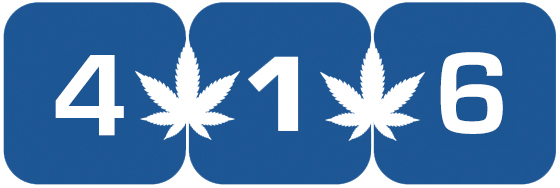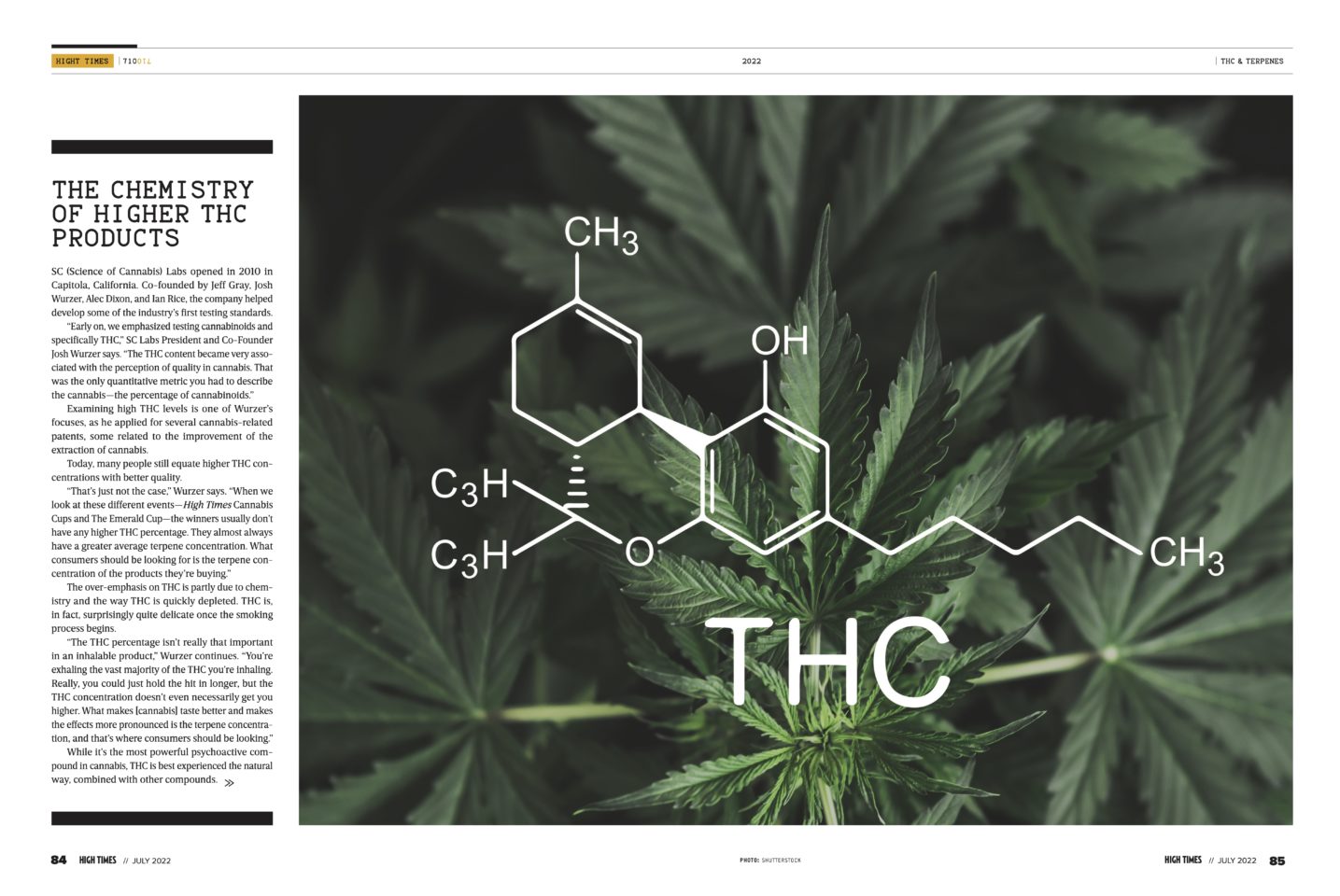THC, or tetrahydrocannabinol, is the principal psychoactive compound found in cannabis. Prohibitive cannabis laws define the plant based on THC levels, and in the United States, cannabis with less than 0.3% THC on a dry weight basis is non-psychoactive and therefore considered hemp.
Until recent years, consumers at the dispensary counter were primarily only concerned about jockeying for the cannabis and concentrates with the maximum amount of THC. Today, they’re smartening up and asking more about terpene and other cannabinoid content. THC, however, remains the most crucial compound overall in terms of the plant’s psychoactive high.
There are multiple reasons for seeking high-THC levels in products beyond shooting for the most potent effect. One benefit of high-THC products for medical patients, for instance, is that high-THC products can provide relief while limiting the amount of smoke and thus reducing harm.
Courtesy of High TimesThe Chemistry of Higher THC Products
SC (Science of Cannabis) Labs opened in 2010 in Capitola, California. Co-founded by Jeff Gray, Josh Wurzer, Alec Dixon, and Ian Rice, the company helped develop some of the industry’s first testing standards.
“Early on, we emphasized testing cannabinoids and specifically THC,” SC Labs President and Co-Founder Josh Wurzer says. “The THC content became very associated with the perception of quality in cannabis. That was the only quantitative metric you had to describe the cannabis—the percentage of cannabinoids.”
Examining high THC levels is one of Wurzer’s focuses, as he applied for several cannabis-related patents, some related to the improvement of the extraction of cannabis.
Today, many people still equate higher THC concentrations with better quality.
“That’s just not the case,” Wurzer says. “When we look at these different events—High Times Cannabis Cups and The Emerald Cup—the winners usually don’t have any higher THC percentage. …
Read More
Author: Benjamin M. Adams / High Times






